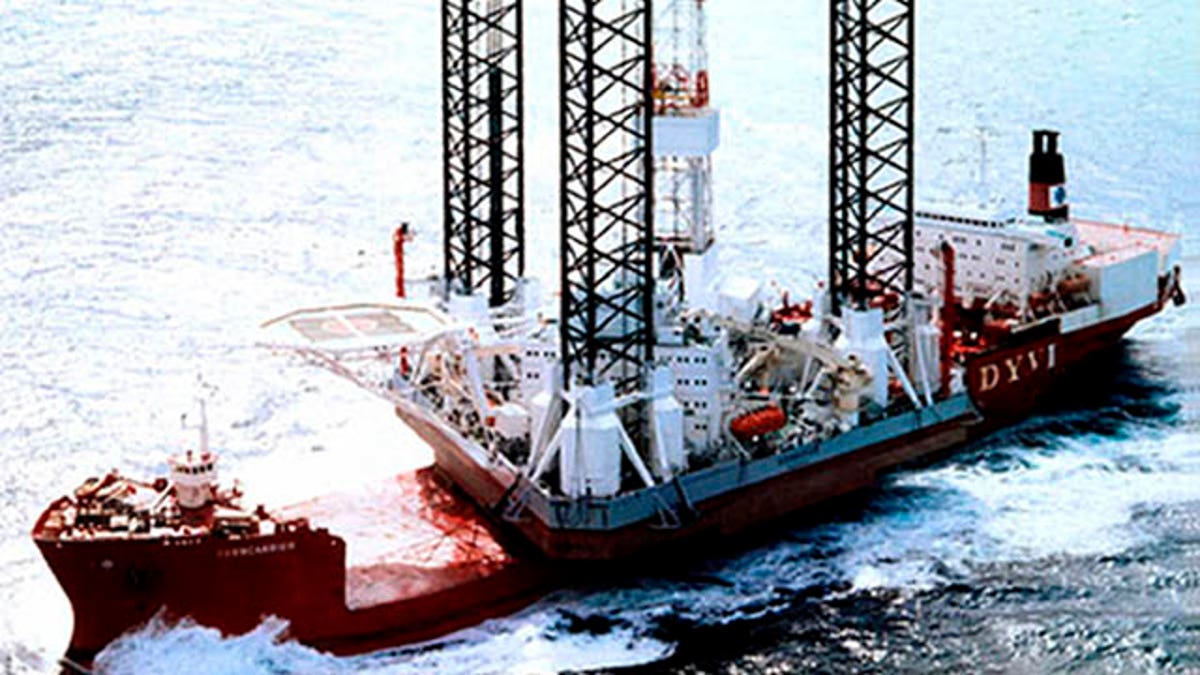
In this undated photo released by Arktikmorneftegazrazvedka an oil drilling platform 'Kolskaya' is seen in the Sea of Okhotsk. (AP)
MOSCOW – Time appeared to be running out to rescue 39 people still missing more than a day after an oil rig capsized and sank in stormy, freezing waters off the eastern coast of Russia.
The owner of the rig said life rafts with people aboard were spotted in the Sea of Okhotsk, but the government would not confirm the report. The chances of survival in the 33.9 Fahrenheit water appeared slim.
Of the 67 men aboard, 14 were plucked alive from the icy water immediately after the accident and taken to a hospital. Workers have since pulled out 10 bodies from the Sea of Okhotsk, and there are four more bodies that haven't been retrieved yet, the Emergencies Ministry said.
The Kolskaya floating platform was being towed back to port in a fierce storm when a strong wave broke some of its equipment and portholes in the crew's dining room, and it started sinking in the choppy water.
One of the survivors, Sergei Grauman, said on Russian state television that the platform's portholes were smashed in a second and the crew had struggled to fix them.
"Everyone rushed to the deck," he told the First Channel station. "It all felt like a movie."
An official at the rig's owner Arktikmorneftegazrazvedka, who asked not to be named because the offshore oil exploration firm is not authorized to comment on the rescue operation, told The Associated Press that rescue vessels have spotted four rafts with people aboard, but it was not clear if they were alive or not.
The Emergencies Ministry and military officials would not confirm that rafts were found, but said there are four vessels, one helicopter and one airplane still searching for survivors. Helicopter shots from the area on NTV television showed nothing floating on the partly iced-over sea.
Russia is the world's largest natural gas exporter and second-largest oil exporter, and hydrocarbons are Russia's key export commodity. But, it produces most of its oil onshore and hasn't had any significant oil platform accidents in recent years.
The platform -- 226 feet long and 262 feet wide -- was built in Finland in 1985. It has recently done some work for Russian energy giant Gazprom.
There has been no report of environmental damage, but there is likely to be little because the rig only carried a small amount of fuel.
Russian newspapers on Monday speculated about whether there could have been fewer deaths if the rig's owner had taken more people off the rig before it was moved.
Russian law allows only a "minimal number of crew members" to be aboard the platform while it is being towed and bars any non-crew members or passengers. Reports said that at least 14 people aboard were not crew members.
